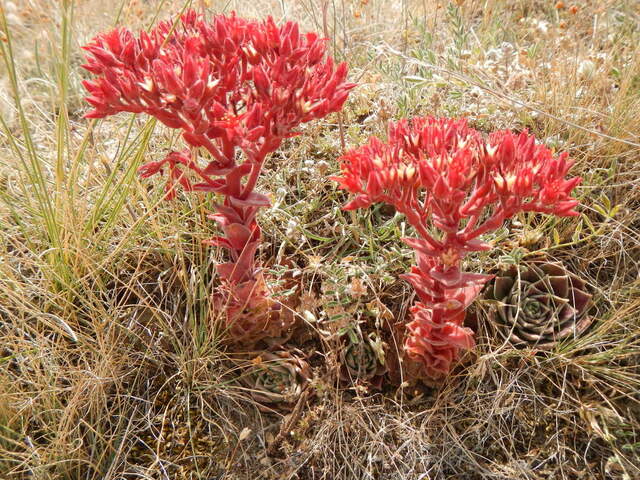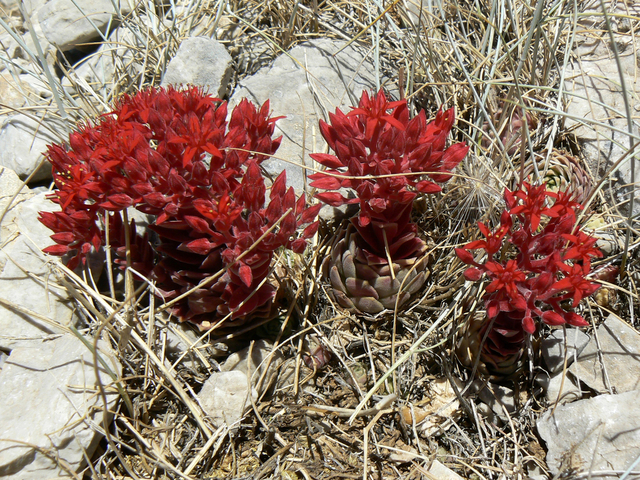High among the rugged cliffs and rocky slopes of Eurasian mountains, where the air is crisp and the soil is scarce, thrives a plant of quiet resilience and enduring grace—Prometheum sempervivoides. This perennial succulent, often known as the "Evergreen Prometheum" or "Rock Stonecrop," embodies nature’s artistry, sculpted by time and tenacity.

Belonging to the Crassulaceae family, Prometheum sempervivoides is closely related to Sedum and Rosularia, sharing the adaptability and drought resistance characteristic of stonecrops. Its scientific name, "sempervivoides," meaning "ever-living" in Latin, speaks to its ability to withstand harsh conditions while maintaining a perpetual state of verdant beauty.
Kingdom: Plantae
Order: Saxifragales
Family: Crassulaceae
Genus: Prometheum
Species: Prometheum sempervivoides
The defining feature of Prometheum sempervivoides is its compact, symmetrical rosettes—tightly arranged fleshy leaves forming a near-perfect spiral. These leaves, often tinged with shades of green, burgundy, or even copper under stress, are thick and waxy, serving as reservoirs of water to endure periods of drought.
As summer unfolds, P. sempervivoides sends forth delicate flowering stalks, adorned with small, star-shaped blossoms. These flowers, ranging in hues from pale pink to deep crimson, rise above the rosettes like tiny beacons of vitality against the stark mountain landscape. Their presence not only signals the plant’s reproductive cycle but also attracts pollinators, ensuring its continued survival.

Native to the rocky highlands of Eurasia, Prometheum sempervivoides thrives in environments where few plants dare to grow. It can be found clinging to cliff faces, nestled in crevices, or spreading across dry, gravelly soil at elevations where temperatures fluctuate dramatically between day and night.
This alpine stonecrop has evolved to endure:
Drought Resistance: Water-storing leaves minimize moisture loss.
Cold Hardiness: Survives frost and snow, retreating into dormancy during the harshest months.
Poor Soil Adaptation: Flourishes in well-draining, mineral-rich soils where organic matter is scarce.
Despite its rugged origins, Prometheum sempervivoides is a sought-after ornamental plant, prized for its ability to thrive in rock gardens, alpine collections, and container arrangements. It is particularly favored by gardeners who appreciate low-maintenance, drought-tolerant species.
Sunlight: Prefers full sun to partial shade.
Soil: Requires well-draining, sandy or rocky substrate.
Watering: Minimal; allow soil to dry out between watering.
Temperature: Cold-hardy but benefits from protection against excessive winter moisture.
Propagation is effortless—whether through offsets, leaf cuttings, or seeds, P. sempervivoides readily establishes itself, making it a resilient addition to any garden.
Much like the mythological Prometheus, who defied the gods to bring fire to humanity, Prometheum sempervivoides stands as a symbol of endurance and defiance against adversity. Its ability to flourish where life seems improbable is a testament to nature’s ingenuity and the delicate balance of survival.
In a world where landscapes change and climates shift, this humble yet extraordinary succulent reminds us of the quiet strength found in adaptation—the ability to persist, to bloom, and to bring beauty to even the most barren of places.
animal tags: Crassulaceae
We created this article in conjunction with AI technology, then made sure it was fact-checked and edited by a Animals Top editor.